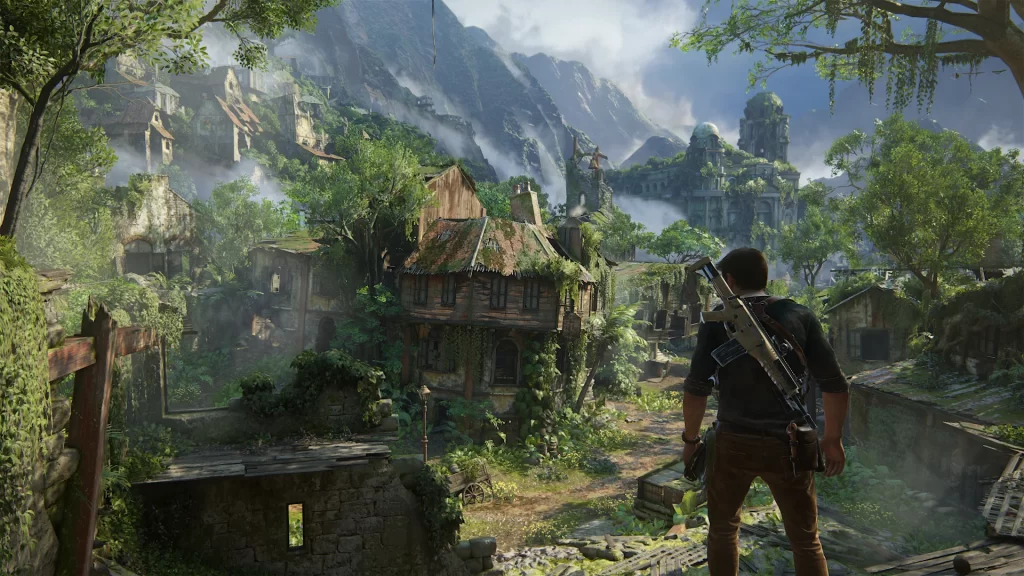Do you know how to write a game plan? The road to developing a game is a long and arduous one. While it can be a really fun experience, people tend to underestimate the amount of work that it can take for a game to reach its final stages. If you want to have a finished product someday, it’s a good idea to define very well what you want to do right from the start.
This early planning that you can do is what we call a “game plan”. Having something to focus on is the best way to figure out a direction in this process.
As you already must know, creating a video game is an intricate and multifaceted process that requires meticulous planning, coordination, and execution. A well-structured game plan is essential for guiding developers through the various stages of game development, ensuring that the final product is cohesive, engaging, and market-ready.
In this article, we will explore how to write a game plan that sets the foundation for a successful video game development project – so keep reading!
Introduction to game planning
A game plan, often referred to as a game design document (GDD), is a comprehensive blueprint that outlines the vision, mechanics, storyline, art style, and technical requirements of a video game. It serves as a reference for the entire development team, providing clear instructions and guidelines for each aspect of the project. Writing an effective game plan involves several key steps, which we will delve into throughout this guide.

Understanding the importance of a game plan
Before we dive into the specifics of how to write a game plan, it’s important to understand why having a game plan is crucial for video game development. Here are some key benefits:
- Clarity and Direction: A game plan provides a clear vision and direction for the project, helping the team stay focused on the end goal.
- Consistency: It ensures consistency across different aspects of the game, including gameplay mechanics, art style, and narrative.
- Resource Management: A well-defined game plan helps in the efficient allocation and management of resources, including time, budget, and personnel.
- Risk Mitigation: By outlining potential challenges and solutions, a game plan helps in identifying and mitigating risks early in the development process.
- Communication: It facilitates effective communication among team members, ensuring everyone is on the same page.
How to write a game plan: 4 easy steps
With just four simple steps, you can lay out your game development plan. This game plan is a way to keep you set on your goals and to figure out what should be a priority and what could be left for later. So get your notepad and your game idea and get to writing!
1 – Define your ideal goal
When we start making a game or getting into game development, we all have this dream game in our minds that motivates us to keep going. The kind of game we always wanted to play but could never find, or a game that could blow people’s minds and change gaming forever.
You should write it down and let it guide you. Make it your ultimate goal in this journey. It will help you pick a direction when you need to and help you inch forward toward it in the long run.
There is one thing you need to keep in mind, though: there is always the chance that it will not turn completely into reality. Sometimes that’s due to reasons beyond your control, and sometimes it’s because something better came along the way. And there’s no problem with that.
2 – Define your minimal goal
Like I said before: game development is hard, and people underestimate the amount of work it can take to finish a game. Your ideal goal may be way too complex to put into practice, even if you don’t realize it.
Still, in game development, it’s important to get to a point in which you could call your game playable. That way, you can publish it, get feedback, and continue improving your game and your ability to develop games. It gives you a tangible, noticeable experience.
Therefore, you should also define what is your minimal goal, in opposition to your ideal goal. That is, what is the minimum that the game should have for it to be called a game? That includes not only game mechanics, but also art, music, and other kinds of content.
It should be enough for it to be considered at least a short game, instead of something like a prototype or a proof-of-concept. It should at least look like it’s finished. From there, you can then improve it based on the feedback you get and keep adding content.
3 – Define your roadmap
What steps do you need to take towards reaching at least the minimal goal?
While the goals you set help you steer your way toward them, it’s important to define a set of smaller, incremental milestones that help you guide your day-to-day development.
When you’re working with grand goals such as making a game, it can be a bit overwhelming to figure out where to start, or what to do once you finish something. There’s just so much that needs to be done at any time that getting lost in the process is quite easy.
Your roadmap will also protect you against feature creep. Feature creep is when you keep adding new features into the game and focus on these shiny new ideas instead of working towards your minimal goal. It’s easy to get lost in the process and end up frustrated and with an unfinished game.
Work towards your minimal goal, and leave those features for later. It’s the best way to get something finished.
4 – Keep your options open
Game development is a creative endeavor and the product of teamwork. While the game may or may not have a leader, the leader doesn’t know everything about everything. Feedback from team members is a great way to improve the game idea and the roadmap, leading to a high-quality product.
This is the case even if you’re working on it by yourself. Getting early feedback is also important to figure out whether your idea works, whether there’s something you should change, or whether you are on the right track.
So, it’s critical to keep an open mind and be welcoming to feedback and the possibility that something should be changed. But you also have to define your priorities, to prevent this from becoming some kind of feature creep. You need to find a balance between implementing feedback and working on your idea.

Tips for writing an effective game plan
- Be Detailed and Specific: Provide as much detail as possible to avoid ambiguity and ensure clarity.
- Keep it Organized: Use clear headings, subheadings, and bullet points to organize information logically.
- Use Visuals: Incorporate sketches, diagrams, and charts to illustrate key concepts and designs.
- Collaborate with the Team: Involve team members in the planning process to ensure all perspectives are considered.
- Review and Revise: Regularly review and revise the game plan to address any changes or new insights.
10 elements that should be on your game plan
When you think about how to write a game plan, you can follow our steps above to start your journey. That said, we would like to give you an example of steps you can follow once you have started your game plan. Check the step-by-step we would follow!
1. Define the concept
The first step in writing a game plan is to define the concept of your game. This involves brainstorming and documenting the core idea, genre, and unique selling points (USPs) of the game. Ask yourself the following questions:
- What is the main theme or premise of the game?
- What genre does the game fall into (e.g., action, adventure, puzzle, RPG)?
- What makes the game unique and appealing to players?
- Who is the target audience?
2. Develop the game’s vision statement
A vision statement is a concise description of what you want your game to achieve. It should encapsulate the overall experience you want to deliver to players. A strong vision statement serves as a guiding light throughout the development process. For example:
“Our game is an open-world adventure where players explore a vibrant, magical realm filled with mysteries and quests. We aim to create an immersive experience that captivates players with its rich storytelling, dynamic environments, and innovative gameplay mechanics.”
3. Outline the gameplay mechanics
Gameplay mechanics are the core systems and rules that define how the game is played. This section of the game plan should provide a detailed explanation of the following:
- Core Mechanics: Describe the fundamental actions players can perform (e.g., movement, combat, crafting).
- Objectives and Goals: Outline the primary objectives and goals players need to achieve (e.g., completing quests and solving puzzles).
- Progression System: Explain how players progress through the game (e.g., leveling up, unlocking new abilities).
- Rewards and Incentives: Detail the rewards and incentives players receive for achieving objectives (e.g., items, achievements).
4. Create the storyline and narrative
A compelling storyline and narrative are essential for engaging players and driving the game forward. In this section, outline the following:
- Plot Summary: Provide a high-level summary of the game’s plot, including the main events and conflicts.
- Characters: Introduce the main characters, their backgrounds, and their roles in the story.
- Setting: Describe the game’s world, including its geography, history, and key locations.
- Dialogue and Cutscenes: Outline any key dialogue and cutscenes that are integral to the story.

5. Design the art style
The art style defines the visual aesthetics of the game and plays a crucial role in creating an immersive experience. This section should cover:
- Visual Theme: Describe the overall visual theme and style (e.g., cartoonish, realistic, pixel art).
- Character Design: Provide sketches or descriptions of the main characters and their visual traits.
- Environment Design: Outline the design of the game’s environments, including key locations and visual elements.
- User Interface (UI) Design: Detail the design of the game’s UI, including menus, HUDs, and icons.
6. Plan the technical requirements
Technical planning is essential to ensure the game runs smoothly across different platforms and devices. This section should include:
- Platform and Hardware Requirements: Specify the platforms (e.g., PC, console, mobile) and minimum hardware requirements.
- Game Engine: Identify the game engine and any other software tools that will be used.
- Technical Specifications: Detail the technical specifications, including frame rate, resolution, and network requirements.
- Optimization and Testing: Outline the plan for optimizing the game and conducting thorough testing to ensure performance and stability.
7. Establish a development timeline
A realistic and well-structured development timeline is crucial for keeping the project on track. This section should cover:
- Milestones: Identify key milestones and deliverables throughout the development process.
- Task Breakdown: Break down the project into smaller tasks and assign responsibilities to team members.
- Deadlines: Set deadlines for each milestone and task to ensure timely completion.
- Contingency Plan: Include a contingency plan to address any unforeseen delays or issues.
8. Budget and resource allocation
Effective budget and resource allocation are essential for managing the financial aspects of the project. This section should include:
- Budget Estimate: Provide an estimate of the overall budget, including development, marketing, and distribution costs.
- Resource Allocation: Outline how resources (e.g., personnel, software, hardware) will be allocated throughout the project.
- Funding Sources: Identify potential funding sources (e.g., investors, crowdfunding, grants) and any financial goals.
9. Marketing and distribution strategy
A comprehensive marketing and distribution strategy is vital for ensuring the game’s success in the market. This section should cover:
- Target Audience: Define the target audience and demographics.
- Marketing Channels: Identify the marketing channels that will be used (e.g., social media, influencers, press releases).
- Promotional Activities: Outline the promotional activities planned (e.g., trailers, demos, beta testing).
- Distribution Plan: Detail the distribution plan, including platforms (e.g., Steam, console stores) and pricing strategy.
10. Legal and compliance considerations
Ensuring compliance with legal and regulatory requirements is crucial for avoiding potential issues down the line. This section should include:
- Intellectual Property: Outline the plan for securing intellectual property rights, including trademarks and copyrights.
- Licensing Agreements: Detail any licensing agreements required for third-party assets or technology.
- Regulatory Compliance: Ensure compliance with relevant regulations and standards (e.g., age ratings, data protection).

How to write a game plan: conclusion
Writing a comprehensive game plan is a critical step in the video game development process. It provides a clear roadmap for the project, ensuring that all aspects of the game are well-defined and aligned with the overall vision. By following the steps outlined in this guide, you can create a robust game plan that sets the foundation for a successful and engaging video game.
In conclusion, knowing how to write a game plan is an essential skill for video game developers. It not only helps in organizing and executing the development process but also ensures that the final product meets the expectations of both the team and the players. Whether you are an indie developer or part of a large studio, a well-crafted game plan is your key to creating a successful game.
Let us turn your game plan into reality!
What if it were much easier to turn your dream game into reality? MainLeaf, a game studio specializing in bringing life to those dreams, is here to help. Do you want us to make the game you’ve always wanted to play? We can do that!
Head to our main page and get a quote today! We’ll get back to you shortly. It’s the easiest and fastest way to get your dream game made. You don’t need to learn how to write a game plan by yourself – let’s bring your vision to life together!

